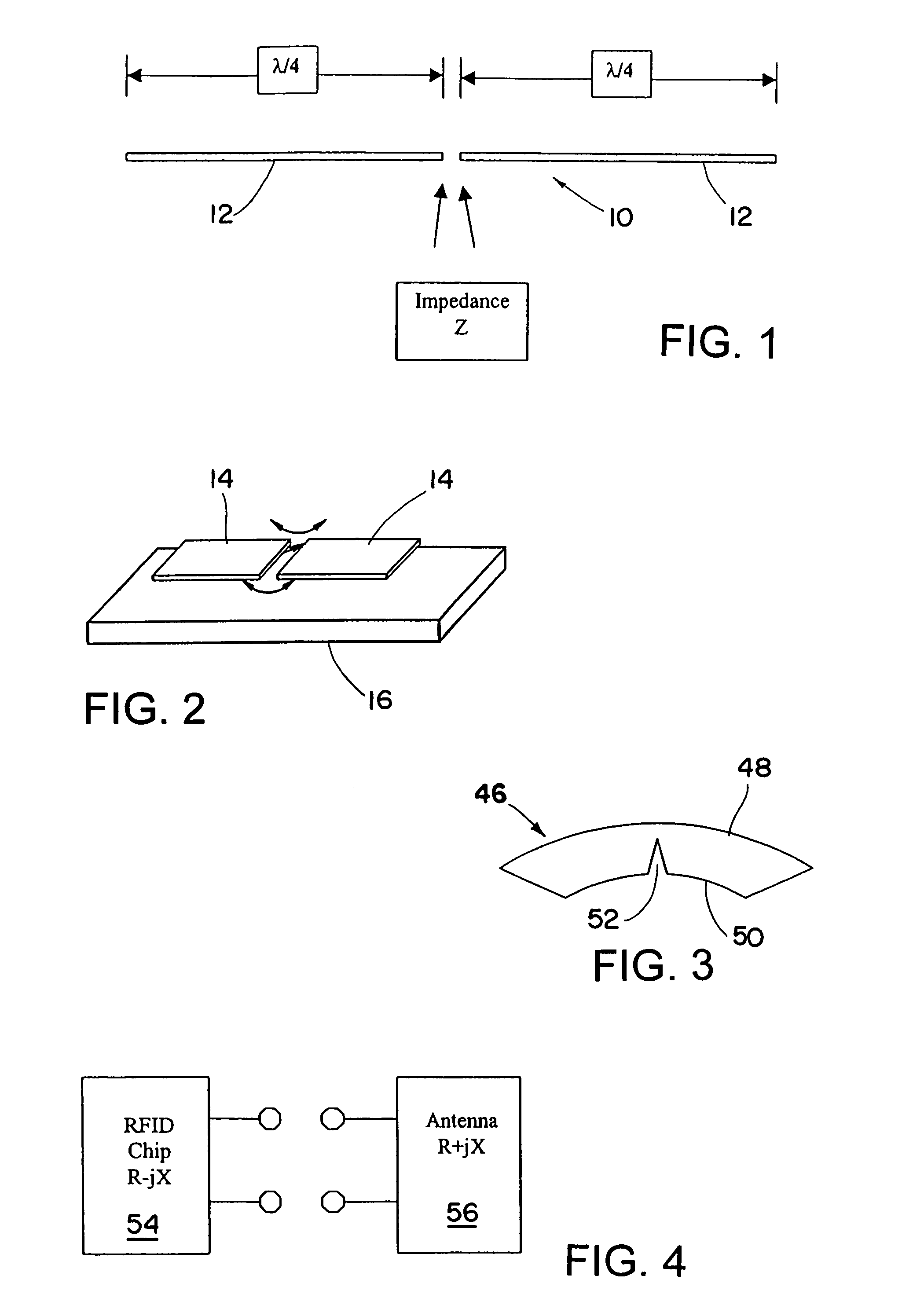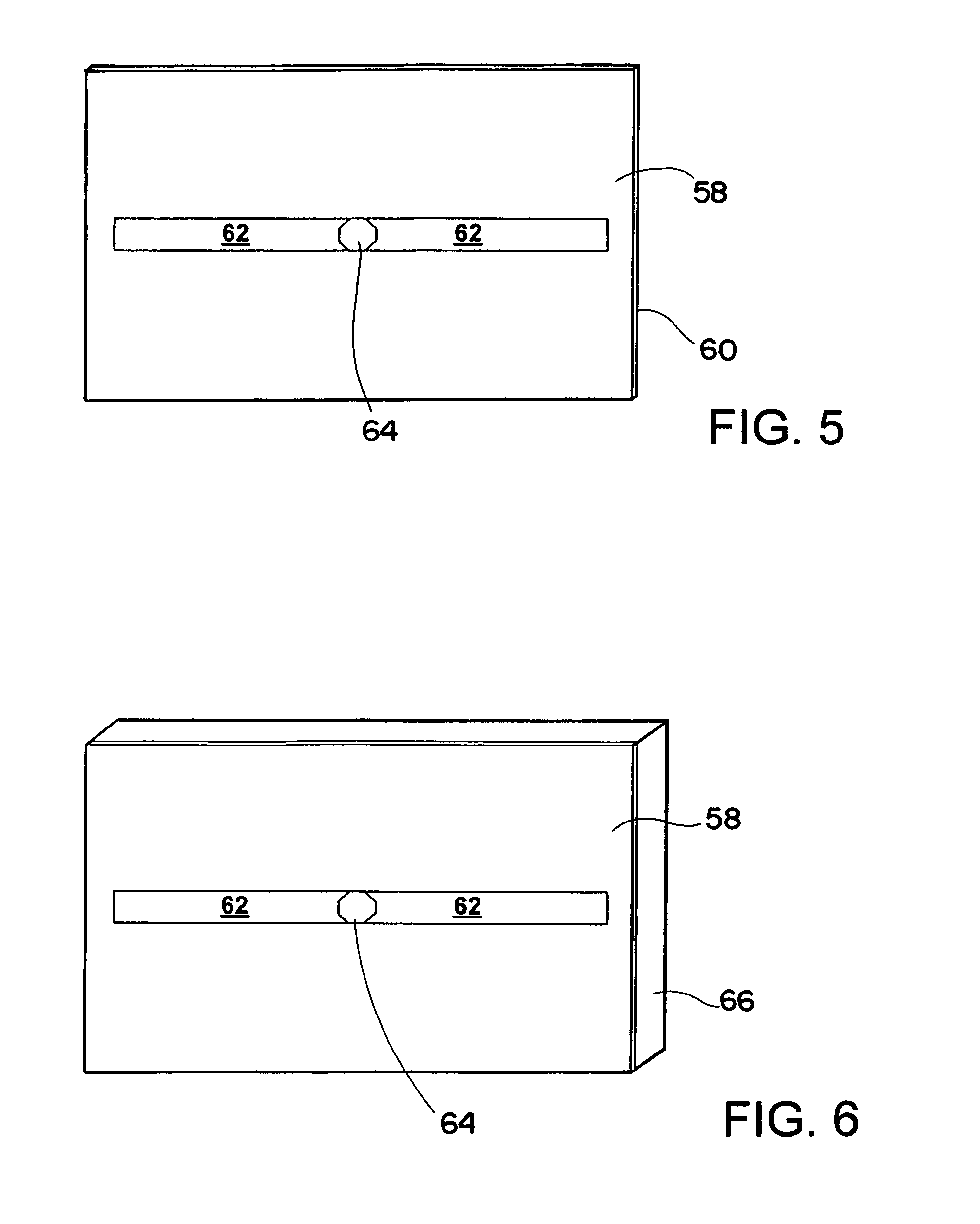Self-compensating antennas for substrates having differing dielectric constant values
a dielectric constant value and substrate technology, applied in the direction of resonant antennas, radiating element structural forms, instruments, etc., can solve the problems of difficult to determine what is a ‘good’ antenna, low efficiency antennas, and large etc., to achieve the effect of small loss resistance and relatively small radiation resistance, and not working well in most situations
- Summary
- Abstract
- Description
- Claims
- Application Information
AI Technical Summary
Benefits of technology
Problems solved by technology
Method used
Image
Examples
Embodiment Construction
[0051]From the above it has been established that, if each tag could be tuned individually, using variable capacitors and inductors, or by changing the arm length, the tag could be made to work on any block of material having a dielectric constant. That cannot be done practically, but if the value and nature of the capacitors and inductors in the matching network are printed next to the antenna, and the elements that adjust the length of the arms, are a function of the substrate dielectric constant itself, with proper design, the tag could then adjust itself.
[0052]To illustrate further the concepts and preferred embodiments of the present invention, consider as an illustrative example, a simple half wave dipole antenna 10 as shown in FIG. 1. In free space, in its simplest form, the antenna will operate efficiently at the frequency where the two elements 12 are of equal length and are a quarter of a wavelength in the medium in which it is placed. The impedance Z of such an antenna st...
PUM
 Login to View More
Login to View More Abstract
Description
Claims
Application Information
 Login to View More
Login to View More - R&D
- Intellectual Property
- Life Sciences
- Materials
- Tech Scout
- Unparalleled Data Quality
- Higher Quality Content
- 60% Fewer Hallucinations
Browse by: Latest US Patents, China's latest patents, Technical Efficacy Thesaurus, Application Domain, Technology Topic, Popular Technical Reports.
© 2025 PatSnap. All rights reserved.Legal|Privacy policy|Modern Slavery Act Transparency Statement|Sitemap|About US| Contact US: help@patsnap.com



